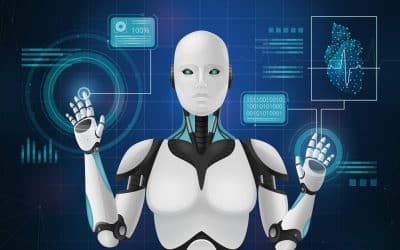With speed, machine learning methods are moving from proving concepts to powering essential technologies that users depend on daily to harness the value that has been unlocked. Numerous teams are involved in the excitement of implementing machine learning into their software without the appropriate equipment to achieve this. The purpose of creating models for machine learning is to address a specific issue, which is why a machine learning model will only be able to solve a problem once it’s being developed and is actively in the hands of consumers. Therefore, deploying ML and Data Science Solutions is equally essential as modeling.
The issues with model deployment and administration have led to a new job: the machine learning engineer. Machine learning engineers are much closer to software engineers than scientists, making them the perfect candidates for implementing models in production. Only some businesses have the resources to hire experts in the field, but in today’s world of lean engineering shops, data analysts should learn to implement their models in production.
We are still deliberating the ideal software suite for building, deploying, and improving machine learning models. This post will discuss the end-to-end tools for producing the ML process and data science.
What Is MLOps & Its Importance?
It’s the way to communicate between the operations and data scientist teams. It is a mix of services and data scientists designed to automate ML pipelines and provide more valuable insights into production systems. It gives reproducibility, visibility, access control, computing resources for testing and training, and deploying AI algorithms for data engineers, business analysts, and operations teams.
It’s evident from the previous content that it was necessary, as well as why it was required and what led to the development of this mixed approach during the time of artificial intelligence. Let’s shed an explanation of the factors that led to the usage of AI.
Multiple Pipelines Orchestration
Creating machine learning models and Data Analytics Solution isn’t just a one-time task in a code file. In reality, the integration of several pipelines has functions to fulfill. Pipelines used for primary processes like pre-processing, modeling, and training for engineering models, as well as model inference, are involved in the overall image of the model’s creation. They are a vital element in the orchestration and simple operation of the multiple pipelines that continuously update the model.
Manage Full Life Cycle
It is believed that the ML lifecycle model comprises several sub-parts, which must be considered as a separate software unit in their own right. Each sub-part has its own management and care requirements, which DevOps usually handles. However, holding the ML lifecycle model using traditional DevOps techniques takes more work. The new approach combines process, people, and technologies, providing an advantage to speedily, efficiently, and effectively improve and implement ML models.
Scale ML Applications
As mentioned in modeling, development should be fine, but the main issue is managing models on a large scale. Managing hundreds of models simultaneously is a highly cumbersome and demanding task that tests the efficiency of the models. It is an innate scale that can manage thousands of pipelines for manufacturing models.
Maintain ML Health
Monitoring ML health following the launch of ML models is the primary part that follows the processing. This is essential so that ML models can be used efficiently and effectively. It provides the most up-to-date ML health tools by allowing the identification of various shifts (model drift or data drift) using an automated method. It can employ the most advanced cutting-edge algorithms within the system to recognize the drifts and ensure that changes can be prevented before they impact ML health.
Continuous Integration And Deployment
Continuous integration and deployment are two main reasons DevOps is used in all software development processes. However, due to the operational capabilities of ML models, it’s challenging to apply the same techniques for continuous integration and deployment as those used in different software programs. This allows users to utilize other tools and methods specifically designed for constant integration and deployment of ML models.
Model Governance
In the context of Model Governance, the model governance system can provide extensive data on model performance by tracking the characteristics of a large size. Additionally, it provides the capability to capture pictures of pipelines to assist in analyzing critical times. The logging facilities and audit trails it provides could also be utilized for reports and compliance assurance.
Benefits Of Using Tools To Productionize ML And Data Science
The complete stack tools allow you to connect and manipulate data, create models for data science, and display the results to improve the data science process.
- Create, produce, track, and analyze your designs within a secure, centralized platform.
- Develop and deploy AI/ML models. Please keep track of drift and performance by setting up alerts for specific performance indicators so that you know what’s happening when it changes.
- Give your employees, customers, partners, and employees the latest, accurate AI-powered information to help you drive results for your business.
- Data science models require that data adhere to a specific schema and that processes be adequately managed within the data pipeline. This allows you to transform, prepare, and cleanse your data to gain insights in a massive manner, allowing analytics to begin the exploration process and deliver the desired results.
- This allows you to reduce labor-intensive tasks and simplify the creation and maintenance of models using ML. Data is flagged if attributes differ from structure, types of data, and the values necessary to draw accurate conclusions.
- Find out how automated models perform daily to determine if the input data received has changed. Ensure that your models are exact and function according to their specifications for precise and accurate forecasts.
- Utilize the built-in collaboration tools to exchange data-related insights, flag up problems, and connect with those involved. Collaborate with colleagues to share data or annotate charts and make notes and comments directly on the visualization.
Criteria For Selecting ML And Data Science Tools
Selecting the appropriate tools for data science is essential to the success of any project in data science. A variety of aspects should be taken into consideration while making these selections:
Functionality
Check that the tools match the needs specific to the undertaking. Many tools excel in different aspects of the process; therefore, choosing the tools that work together is vital.
Scalability
When data volumes increase in size, scalability is crucial. Selected tools can handle the increasing volume of data without impacting efficiency.
Ease Of Integration
Seamlessly integrating existing platforms and databases is essential to ensuring a seamless workflow. Find tools to support the most popular data formats and effortlessly connect to many databases.
Community And Support
An active community and substantial assistance from the tool’s developers can be valuable sources. An active community indicates a program’s popularity and provides abundant information, including tutorials, plugins, and other tools.
Cost
Assess the total cost of ownership, including license fees, hardware requirements, and other expenses. Pick tools that fit your budget and provide the required functionality.
Top Machine Learning And Data Science Tools
Using the appropriate tools in machine learning and data science is equally essential as comprehending the fundamentals. The available tools, such as libraries and programming languages, offer the necessary elements to build and implement machine learning algorithms. Here are a few of the top tools:
Python
Python is one of the most popular languages used in machine learning and data science. Thanks to its ease of use and accessibility, it is a good choice for students. Also, it comes with a robust library ecosystem designed to support machine learning. Libraries like NumPy and Pandas can be used to manipulate and analyze data, and Matplotlib can be used to visualize data.
Machine Learning R
R is another programming language utilized in machine learning, especially in statistical analysis. With its comprehensive software suite and easy setup process, creating machine learning algorithms has never been simpler! Programs such as caret and random Forest can provide various machine learning techniques, ranging from regression and classification through clustering, dimensionality reduction, and reduction.
TensorFlow
TensorFlow is an open-source program for computing numerically, especially suited to large-scale machine learning. It was created in collaboration with Google Brain’s team and supports GPUs and CPUs. TensorFlow lets you build and develop complex neural networks, making it a preferred option for deep learning applications.
Scikit-Learn
Scikit-learn is a Python library that provides many different machine-learning methods for non-supervised and supervised learning. It is renowned for its simple API and detailed description. Scikit-learn is commonly used for data analysis and data mining. It is also compatible with other Python library applications like NumPy and Pandas.
Cortex
Cortex is a free multi-framework software that can be adapted enough to serve models and for monitoring purposes such as model monitoring. With its ability to handle various machine learning workflows, Cortex allows you to control operations and manage models. It can also be used as a substitute for serving models using the SageMaker tool and as an application for model deployment built on top of AWS services such as Elastic Kubernetes Service (EKS), Lambda, or Fargate.
Cortex is expanding to open-source projects like Docker, Kubernetes, TensorFlow Serving, and TorchServe. Cortex can be integrated with all ML tools or libraries together. It allows endpoints to be scalable to handle workloads. You can deploy several models from the same API endpoint. Additionally, it acts as a way to upgrade existing endpoints without stopping the server. This is in line with the actions of a monitoring tool that monitors an endpoint’s performance and prediction information.
Keras
Keras is an advanced neural network API written in Python that works seamlessly with TensorFlow, CNTK, or Theano. It was created to enable rapid testing and offers a simple interface for building and training neural networks, making it ideal for those just beginning deep learning.
PyTorch
PyTorch is an open-source machine-learning library built on the Torch library. It’s famous for its versatility and effectiveness, which makes it well-liked by researchers. PyTorch can support various programs, including computer vision and natural language processing. One of the most important highlights is the adaptive computational graph, which lets you customize and optimize computation.
BentoML
BentoML makes it easier to develop machine-learning solutions. BentoML provides a standard, Python-based framework for creating and maintaining production-grade APIs. This framework lets users quickly package models that have been trained using any ML framework that supports offline and online model serving. BentoML’s model server is high-performance, supports dynamic micro-batching, and can increase or decrease the size of model inference teams independent of business processing. The UI dashboard provides a central platform to store models and monitor deployment.
The framework’s flexible design makes configuration compatible with current GitOps workflows. Automatic docker image generation makes deployment to production a straightforward and versioned procedure. This multi-purpose framework is designed to address ML models that serve, the administration of the model, and deployment. Its primary focus is linking the data science and DevOps departments to create better working conditions and high-performance, flexible API endpoints.
Microsoft’s Data Visualization Solution
Power BI is Microsoft’s powerful software for visualizing data and business intelligence. It connects to many information sources, such as cloud services, databases, and spreadsheets. It offers many features that are particularly useful to organizations that are part of Microsoft’s platform and need complete Data Analytics Solutions and visualization options.
SAS
SAS is an all-encompassing analytics platform various industries use to perform advanced analytical and predictive models. SAS offers a variety of solutions and tools to manage data analysis, visualization, and analytics. It is the preferred option for businesses requiring advanced analytics tools and an extensive history of using SAS software to conduct data science.
What Are The Issues Associated With Productionizing ML Models?
Below are some of the most common issues organizations face when converting these machine-learning models into active profits for their business.
Dataset Dependency
The process of feeding the data into training and the steps taken at the time of evaluation within the Sandbox for data scientists will vary dramatically in real-life situations. Depending on the scenario, the data’s structure changes over time, and irregularity can result in poor performance of models based on ML.
Pipelines From Simple To Complex
Making a basic model, making it an inference, and then generating predictions are easy ways to get business information. The most common method is a manual offline learning process, using the learned model to make inferences. In most cases, however, more than the method is needed regarding business issues. In the real world, consistency is essential, especially when training models need fresh information.
Retraining pipelines must complement the existing system, which regularly receives the most recent information directly from Data Lake. A variety of models will be used in the retraining process, so human input is necessary to choose which model is the best to apply for production. In other instances, ensemble models for accuracy improvement and several training pipelines are utilized. In the Federated process, the pipeline takes more work to manage.
Scalability Issues
There are issues with scaling across different stages of development, and even when the pipeline for data is scaled, problems arise when feeding data into ML models. The ML models are developed inside the Data Scientist Sandbox. The model was not designed for scalability considerations. Instead, it was designed to achieve high accuracy and use the best algorithm. Developing different ML frameworks is a good idea, as each has problems with scaling and potential. Regarding hardware training, a more complex neural network requires a mighty GPU. Likewise, simpler ML models could be executed on a group of CPUs.
Production ML Risk
The chance that ML models could perform better is constant, requiring continual assessment and monitoring to ensure they’re operating within the expected bounds. Measures like Precision, Accuracy Recall, etc., can’t be utilized for live data since live data cannot contain labels. Various techniques like Data Deviation Detection or Drift Detection, Canary Pipelines, and A/B tests for production should be employed to guarantee the health of ML models.
Process And Collaboration
ML needs a range of abilities to manage production-grade ML systems, such as data engineers, data scientists, Business analysts, and operational processes in production. The different teams are focused on other results. Data scientists can increase precision and identify data errors. Business analysts are looking to improve the quality of their KPIs. The operations team wants to track uptime and resources.
In contrast to those in the data scientist sandbox, the production environment is complex, with various components such as models and algorithm pipelines. They are challenging to manage, and modifying them is a different issue. Storage for objects is required to keep the ML models. A repository for source control is a more efficient option.
Conclusion
Machine learning (ML) is a potent and versatile ability that helps solve complex problems and provides value in various fields. Yet, creating and deploying ML production tools is challenging. It involves careful design, testing, improvement, and ongoing maintenance for scalability, reliability, and efficiency. We’ve learned that starting in machine learning is a must. You need a solid base of programming skills, a thorough knowledge of the algorithms used in machine learning, and practical experience with projects. Moreover, you can also take the help of Data Science & Machine Learning Consulting services for successful deployment.
If you’re looking to become an information scientist, machine learning engineer, AI specialist, or researcher scientist, there’s a variety of possibilities in the area that deals with machine learning. If you can access the appropriate equipment and tools, anybody could learn to master machine learning and help contribute to the exciting subject. Machine Learning grows with ML research being applied to business. MLOps lets you deploy models using ML quickly, rather than taking weeks, and allows the creation of a much more efficient result than the homegrown implementations.











